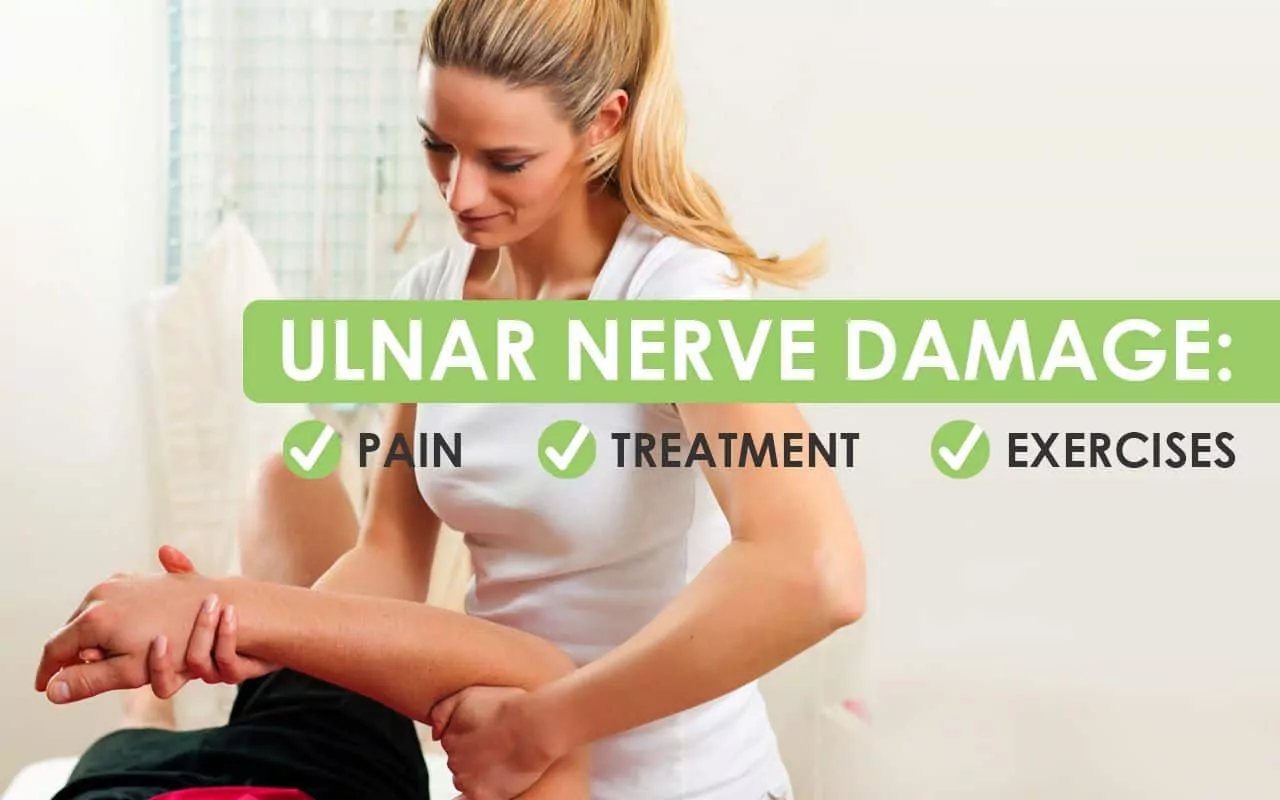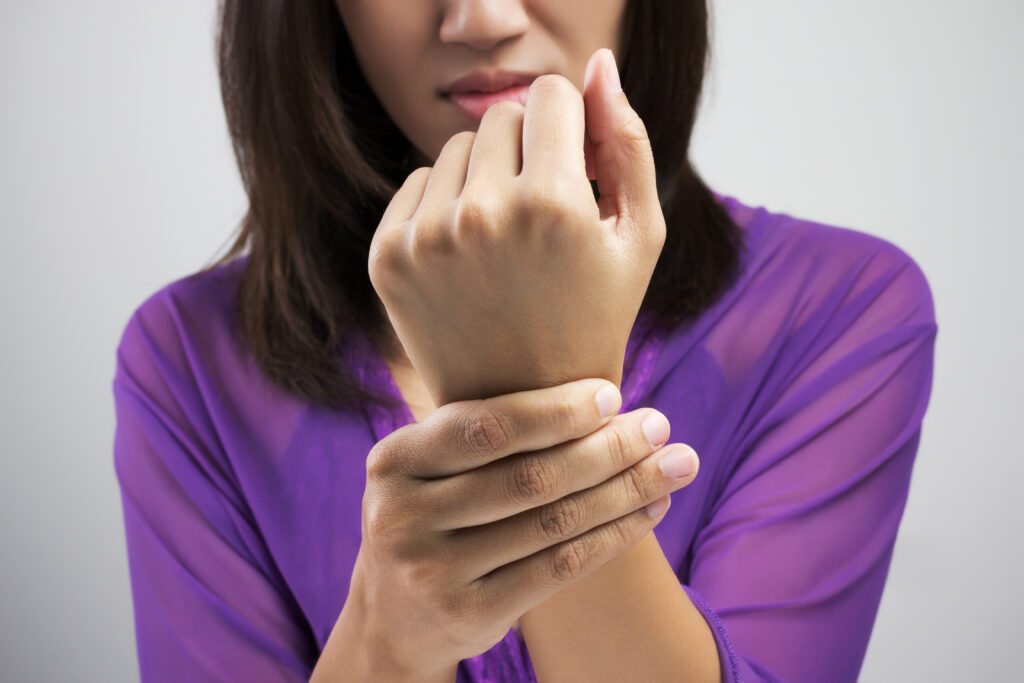
Ulnar nerve damage can be a source of significant discomfort and functional impairment, affecting one’s ability to carry out daily tasks. As one of the main nerves in the arm, the ulnar nerve is responsible for sensations in the forearm and parts of the hand. Damage or entrapment to this nerve can lead to pain, numbness, and a tingling sensation, often referred to as “pins and needles.” Recognizing the symptoms early is crucial in preventing further complications and seeking appropriate treatment.

Treatment options for ulnar nerve issues range from conservative measures to surgical intervention, depending on the severity of the condition. Consistent and gentle exercises can help alleviate some symptoms and improve arm function by strengthening the surrounding muscles and reducing nerve entrapment. Physical therapy can be tailored to individual needs, targeting specific areas affected by ulnar nerve damage to optimize recovery and reduce pain.

The ulnar nerve is a critical component of upper limb function, with a pathway extending from the neck to the hand, and specific anatomy that makes it susceptible to compression at the elbow and wrist.
The ulnar nerve originates from the brachial plexus, a network of nerves in the shoulder region that branches out to supply the arm, forearm, and hand. It travels along the inner side of the arm, passing through the cubital tunnel at the elbow before continuing its course along the forearm. Eventually, the ulnar nerve enters the hand through Guyon’s canal at the wrist.
Two primary locations are notorious for ulnar nerve entrapment: the cubital tunnel at the elbow and Guyon’s canal at the wrist. The anatomy of the cubital tunnel, a narrow passageway consisting of bone and ligament, makes it a common site where the nerve can be compressed. Similarly, the ulnar nerve can also be compressed as it traverses Guyon’s canal, which is a tunnel formed by ligaments and bones in the wrist.
In diagnosing and addressing ulnar nerve damage, understanding the specific symptoms and underlying causes is crucial for effective treatment. Identifying the correct signs can help pinpoint the nerve’s entrapment and facilitate a clearer pathway to relief and recovery.
Patients suffering from ulnar nerve damage often experience a range of discomforting sensations. These typically include:
The symptoms may worsen when the elbow is bent or when the wrist is extended, as these positions can increase nerve compression.
Ulnar nerve damage typically results from increased pressure or compression on the nerve. This can arise due to various reasons, including:
Other potential causes are the development of cysts or ganglion, which physically impede nerve pathways, creating chronic issues that need to be addressed to alleviate symptoms.
Diagnosing ulnar nerve entrapment begins with a clinician conducting a comprehensive physical exam and may be followed by advanced diagnostic tests to confirm the condition and determine its severity.
During the physical exam, a doctor assesses the patient’s arm and hand for signs of ulnar nerve damage. They look for symptoms such as numbness, tingling, and muscle weakness in the hand, particularly the ring and pinky fingers. The doctor may perform the Tinel’s sign test, gently tapping over the nerve to elicit a sensation in the ulnar nerve distribution area.
If the physical exam suggests ulnar nerve entrapment, additional advanced diagnostic tests are recommended. These may include:
In some cases, imaging tests help visualize the ulnar nerve’s path and surrounding structures:
The combination of a thorough physical examination, detailed patient history, and selective use of advanced diagnostic tests enables healthcare providers to effectively diagnose ulnar nerve entrapment.
Conservative treatments for ulnar nerve damage focus on alleviating symptoms without surgical intervention. They consider the individual’s daily activities, and potential irritants, and often combine rest, ice, medications, and non-invasive therapies.
Non-invasive therapies, such as nerve gliding exercises, can play a pivotal role in treating ulnar nerve damage. By encouraging mobility, they reduce nerve entrapment and improve symptoms. Additionally, splints or elbow braces can be employed, especially during the night, to reduce the bending of the elbow which may exacerbate nerve compression.
For patients experiencing hand weakness or other troublesome symptoms, physiotherapy provides targeted exercises aimed at strengthening the hand and arm Conservative treatment options include controlled activity and exercises.
When managing ulnar nerve damage at home, rest and avoiding activities that aggravate the condition are key. Application of ice to the affected area might reduce swelling and provide temporary pain relief. To address inflammation and pain, over-the-counter nonsteroidal anti-inflammatory drugs (NSAIDs) such as ibuprofen can be effective.
Home remedies and lifestyle modifications like adjustments in work ergonomics or avoiding leaning on the affected elbow can also provide significant relief from the symptoms.
Physical therapy plays a critical role in the management of ulnar nerve damage, involving specific exercises aimed at improving strength and flexibility, as well as nerve gliding techniques to promote nerve health.
Strengthening exercises are important for maintaining muscle integrity and improving grip strength which can be compromised due to ulnar nerve damage. A physical therapist may recommend exercises that focus on the muscles of the arm and hand, especially those affected by the ulnar nerve. For example, a patient may perform grip strengthening tasks like squeezing a stress ball, or targeted dumbbell exercises for wrist extension and flexion.
Stretching helps to maintain or increase flexibility and range of motion, potentially alleviating some symptoms of ulnar nerve damage. Wrist flexor stretches are commonly prescribed, where one extends the arm with the palm facing up and gently pulls the fingers back with the other hand.
Nerve gliding exercises aim to keep the ulnar nerve moving smoothly through the cubital tunnel at the elbow and the Guyon’s canal at the wrist. By preventing or alleviating entrapment, these movements can help minimize pain and improve nerve function. Patients are often instructed to perform a series of movements that gently glide the nerve, such as the “ulnar nerve glide”:
Patients should perform these exercises slowly and with care, as repetitive movements done incorrectly can worsen symptoms. It is crucial that they seek guidance from a qualified physical therapist to ensure that the exercises are performed correctly and to tailor a program suited to their individual needs.
While many patients with ulnar nerve damage respond well to nonsurgical treatments, surgery may be recommended when these measures fail to alleviate symptoms or in cases of significant nerve compression causing muscle weakness or damage.
Surgery is typically considered when conservative options, such as physical therapy or bracing, do not produce sufficient improvement. Symptoms that may lead to a surgical recommendation include persistent numbness, weakness, or pain that impedes daily activities. Additionally, signs of muscle atrophy or severe nerve compression on diagnostic studies might necessitate surgical intervention.
There are mainly three types of surgeries performed to alleviate ulnar nerve entrapment:
Surgical treatment aims to relieve the pressure (decompression) on the ulnar nerve and to modify the anatomical pathway of the nerve to prevent future entrapment. The choice of which surgical procedure to employ depends on the location and severity of the nerve entrapment, as well as the patient’s individual anatomy and circumstances.
After ulnar nerve decompression surgery, patients embark on a journey of regaining functionality and managing symptoms. A structured post-operative plan is essential to maximize recovery and minimize complications such as inflammation and swelling.
The initial phase of rehabilitation typically involves immobilization to promote healing. This often includes a splint to keep the elbow at a 90-degree angle. Active physical therapy may begin within a week, focusing on gripping exercises and range-of-motion exercises for the wrist and shoulder. It’s important to adhere to the surgeon’s instructions to reduce the risk of inflammation and swelling. Gradual reintroduction of activities is critical to prevent undue stress on the healing nerve.
For long-term care, patients are advised to engage in light exercises as recommended by a healthcare professional to aid the recovery process. Patients should incorporate periods of rest to allow for ongoing healing. It’s vital to avoid heavy lifting or strenuous activities until the physician confirms full recovery of the ulnar nerve. Following these guidelines can help ensure a smoother recuperation and return to normal activities.

Making lifestyle changes and adjusting daily activities can significantly reduce the risk and severity of ulnar nerve damage. Engaging in these measures helps to maintain nerve health and prevent conditions such as cubital tunnel syndrome and Guyon’s canal syndrome.
Individuals experiencing symptoms of ulnar nerve damage should consider using an elbow pad to cushion the elbow during activities that place pressure on it. For those involved in sports, particularly cyclists, it is crucial to adjust technique and equipment to avoid conditions like handlebar palsy, which is caused by prolonged pressure on the ulnar nerve at the wrist. Minimizing repetitive movements that stress the nerve and taking regular breaks can also help in preventing damage.
Improving workplace ergonomics plays a vital role in reducing the stress on the ulnar nerve. For example, office workers are encouraged to adjust their chair and desk heights to maintain a neutral wrist position, keeping the elbow bent at an angle close to 90 degrees. Ergonomic keyboards and mouse devices can also help to keep the wrist in a neutral position and reduce the likelihood of repetitive strain injuries.
In this section, individuals seeking information about ulnar nerve issues will find answers to commonly asked questions regarding exercises, treatment options, and recovery for ulnar nerve entrapment.
Exercises designed for ulnar nerve entrapment can often help alleviate pain. They typically focus on gentle stretching and strengthening the arm and wrist to reduce pressure on the ulnar nerve.
Yes, self-massage techniques can help in relieving ulnar nerve discomfort by improving blood circulation and reducing muscle tension in the affected areas.
Effective home remedies for managing ulnar nerve pain often include rest, ice application to reduce inflammation, and the use of elbow pads to cushion the affected area.
Mobility or gliding exercises aim to enhance the nerve’s ability to slide through surrounding tissues smoothly, which is beneficial for ulnar nerve recovery.
Individuals should avoid activities that involve prolonged elbow bending or leaning on the elbow, ensure proper ergonomics while working, and consider wearing a splint at night to maintain the elbow in a straight position.
The recovery period for an irritated ulnar nerve can vary depending on severity, but mild cases may resolve with conservative treatment within a few weeks, while more severe cases may require several months or longer to fully recover.
For more information on our Copper Infused Compression Sleeves, Click Here!